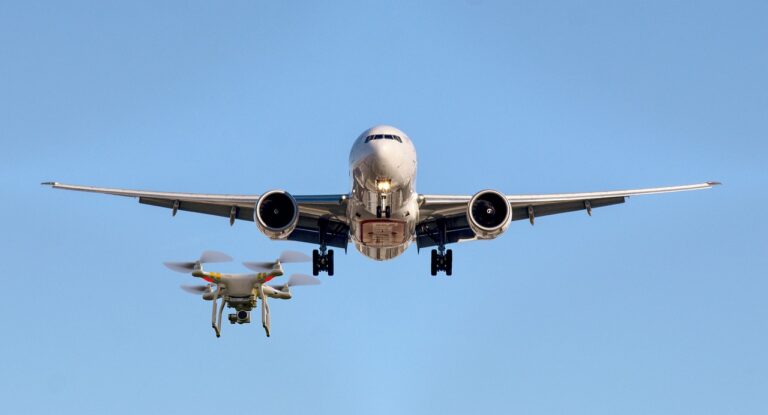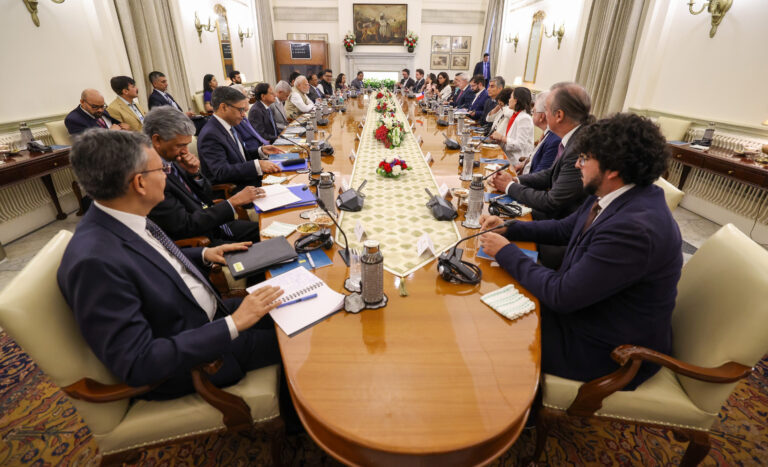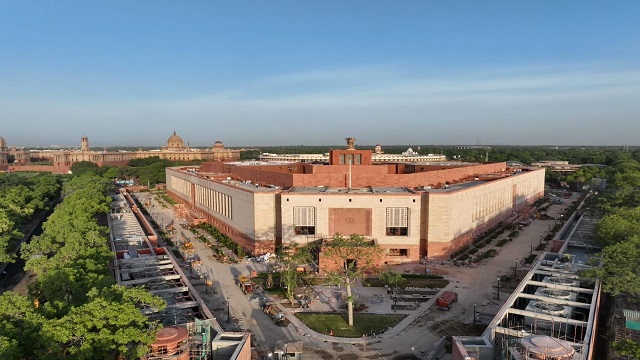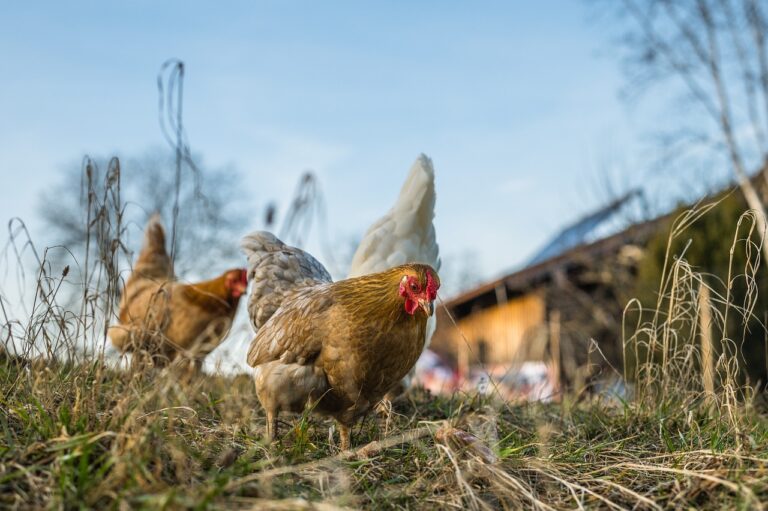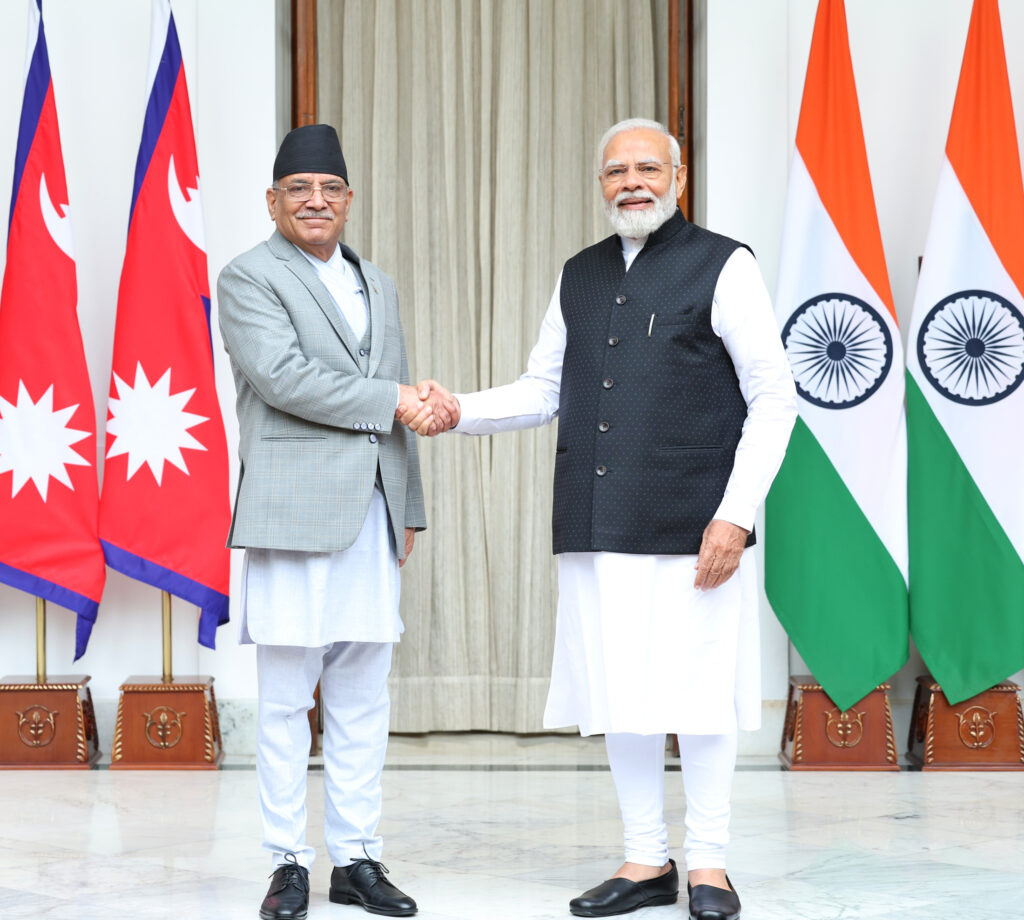
PM Narendra Modi with the Prime Minister of Nepal, Pushpa Kamal Dahal at Hyderabad House, in New Delhi on June 01, 2023.
New Delhi: Welcoming the visiting Nepalese PM Pushpakant Kamal Dahal Prachanda here today, Prime Minister Narendra Modi recalled the “HIT” (Highways, I-ways, and Trans-ways) formula for India-Nepal relations that he gave during his first visit to Nepal within three months of taking charge in office in 2014.
Prachanda’s present visit is a “hit”, and so is, as Modi claimed, the Indo-Nepal relationship! “Today, after 9 years, I am happy to say that our partnership has truly been a hit,” Modi said today.
In continuation of the “HIT” formula, during the visit of Nepalese Prime Minister Pushpa Kamal Dahal Prachanda, India and Nepal today signed a long-term Power Trade Agreement. Under this Agreement, India has set a target of importing 10,000 MW of electricity from Nepal in the coming ten years.
Cooperation in the power sector was further strengthened by agreements on the Phukot-Karnali and Lower Arun Hydro-Electric Projects. While an MoU was signed for the development of a 480-megawatt Phukot-Karnali hydropower project in western Nepal by NHPC of India, the signing of the project development agreement for the 679-megawatt Lower Arun project by India’s Sutlej Jal Vidyut Nigam was also welcomed by the two Prime Ministers.
Moreover, in view of the positive impact of the Motihari-Amlekhganj petroleum pipeline, it was decided to take this pipeline up to Chitwan. Besides this, another new pipeline will also be constructed from Siliguri to Jhapa in eastern Nepal. Simultaneously, new storage terminals will also be set up at Chitwan and Jhapa.
It may be recalled that India and Nepal had issued a joint vision statement on power sector cooperation in April last year when former Prime Minister Sher Bahadur Deuba was visiting India.
Besides power generation and power trade, the two Prime Ministers participated in the groundbreaking of the 400 KV, Gorakhpur-Butwal power transmission line. This is the second high-capacity interconnection between the two countries. India has also decided to fund three major transmission corridors in Nepal under the line of credit support of about $680 million. These are Bheri Corridor, Nijgadh-Inaruwa Corridor and Gandak-Nepalgunj corridor. Some time ago, India also agreed to permit the first trilateral power transaction from Nepal to Bangladesh via India for up to 40 MW of power.
India will also increase physical connectivity with Nepal by setting up new rail links. Along with this, it has also been decided to provide training to railway personnel of Nepal in Indian Railway Institutes. Further, to boost connectivity to the far western region of Nepal, two more bridges will be built at Shirsha and Jhulaghat.
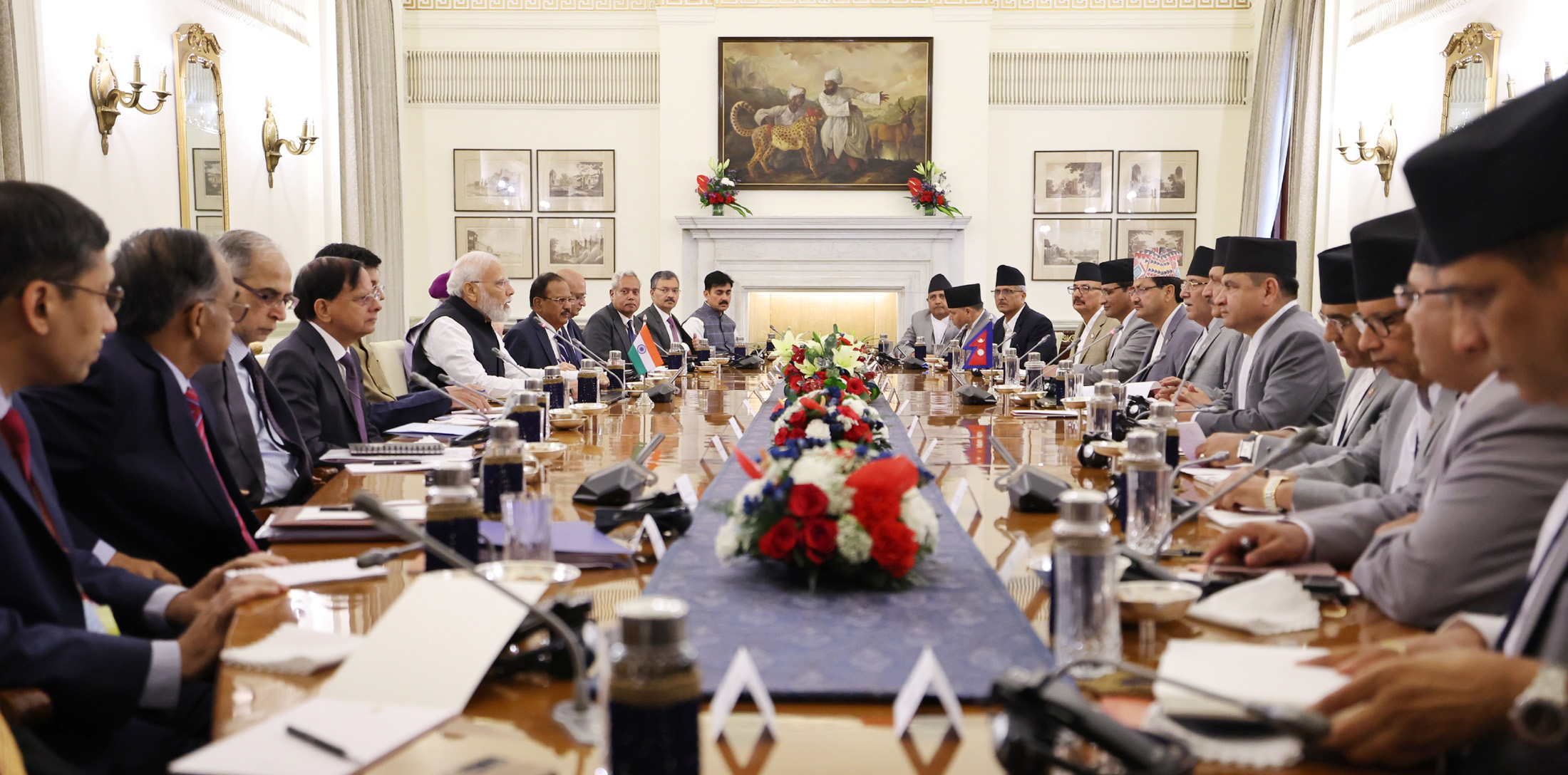
In the railway sector, both the Prime Minister presided over the inaugural run of the cross-border freight rail operations between Bathnaha in India and Nepal custom yard in Nepal, on the Jogbani-Biratnagar rail link, which was constructed with the Indian grant assistance. This was accompanied by handing over to the Government of Nepal, the Kurtha-Bijalpura rail section of the Jaynagar-Kurtha passenger rail link, of which operations were flagged off by the Prime Ministers of India and Nepal last year.
India is additionally providing a one-time grant for the maintenance of the railway infrastructure for the Jaynagar-Kurtha rail section. The final location survey of the Raxaul-Kathmandu rail link was also handed over to the Nepalese side. Briefing media persons, India’s Foreign Secretary Vinay Kwatra informed that the Field Level Survey (FLS) for the Raxaul-Kathmandu rail connectivity project has recently been handed over to the Nepalese government.
“Currently, we are awaiting comments from the Nepalese government regarding this field-level survey. Once we receive their feedback, further steps, such as the Detailed Project Report (DPR) and the necessary technical work for the Raxaul-Kathmandu route, can proceed. However, before commencing these tasks, we are awaiting a response from Nepal, specifically regarding the documents related to our field-level surveys. Once we receive their reply, it will be easier to determine the project’s timeline,” Kwatra said.
Moreover, today it was also agreed that India will provide training and capacity building to Nepal Rail Officials in the Indian Railway Institutes. The conclusion of the agreement between NPCI International Limited and NCHL of Nepal links the digital payment systems and is yet another significant step in creating seamless financial connectivity between India and Nepal. This also builds on the launch of the Rupay card last year.
Referring to the “HIT” (Highways, I-ways, and Trans-ways) formula for India-Nepal relations, Modi recalled that in 2014, while giving the “HIT” doctrine, he said that he will establish such links between India and Nepal “so that our borders do not become barriers between us – Oil should be exported through pipelines instead of trucks. Bridges should be built over the shared rivers. Facilities should be created for exporting electricity from Nepal to India”.
Modi pointed out that Nepal’s first ICP was made in Birganj; the first Cross-Border Petroleum Pipeline of the region was built between India and Nepal; the first broad-gauge rail line has been established between the two countries; and new transmission lines have been constructed across the border.
“We are now importing more than 450 MW of power from Nepal,” Modi said, adding that “It will take us a whole day if we start describing the achievements of 9 years”.
Modi and Prachanda welcomed the steps taken in financial connectivity through cross-border digital payments. Modi said thousands of students, lakhs of tourists and pilgrims as well as patients who come to India for medical treatment will also be benefitted from this.
Referring to the “very old” and “very strong” religious and cultural ties between India and Nepal, Modi disclosed that today he and Prachanda decided to expedite the projects related to the Ramayana circuit.
“We will continue to work to give our relationship the height of the Himalayas. And in this spirit, we will solve all the issues, whether it is of boundary or any other issue,” Modi said.
Prachanda is scheduled to visit Ujjain tomorrow and Modi told him he was sure that his visit to Ujjain will be “full of energy”, and that he will also have a spiritual experience on this journey “from Pashupatinath to Mahakaleshwar”.

Earlier today, Prachanda called on the President, Droupadi Murmu at Rashtrapati Bhavan. The President congratulated him on his appointment as Prime Minister of Nepal. She said that in view of his old association with India and his experience, India looks forward to a positive agenda in India-Nepal bilateral relations to take the age-old partnership to new heights. She expressed confidence that this visit would further strengthen the strong bond between the two countries.
This is Prime Minister Prachanda’s first bilateral visit abroad since he assumed office as Prime Minister in December last year. Overall, this is his fourth visit to India in his capacity as the Prime Minister of Nepal. He arrived yesterday and following his arrival, India’s National Security Adviser Ajit Dobhal called on him yesterday. Today morning he visited Rajghat to pay tribute to Mahatma Gandhi and thereafter, he was received at Hyderabad House by the Honorable Prime Minister for talks.
– global bihari bureau


